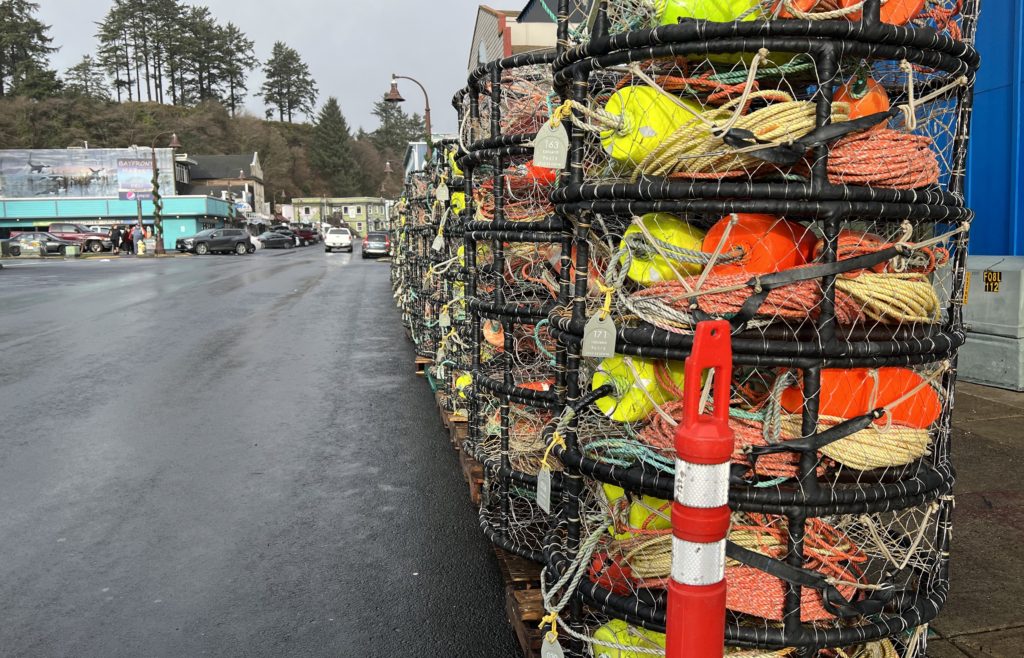
By DANA TIMS/YachatsNews
NEWPORT — Oregon’s ocean commercial Dungeness crab season will not open until at least Dec. 31 after a new round of testing showed lingering levels of domoic acid and low levels of meat yield in some areas.
A decision will be made on or around Dec. 18 whether to allow the state’s $60 million 2022 crab season to open by year’s end, said Kelly Corbett, who helps oversee the testing for the Oregon Department of Fish and Wildlife.
State regulations prohibit the season from opening any earlier than Dec. 1. That date was officially delayed until Dec. 15 after the first rounds of testing also showed both elevated levels of domoic acid, a naturally occurring substance associated with algal blooms, and low meat “pick-out” percentages.
The result is that the state’s fleet of 300 or so commercial crab boats will remain in port until both tests give the green light for the go-ahead.

The third round of testing will occur in coming weeks. Depending on the results, the season could be further delayed or split into areas with different opening dates.
In the latest tests, acid levels came down in some areas, but not in others, said Mitch Vance, ODFW’s shellfish project leader in Newport. The highest acid levels were detected south of Coos Bay.
In the past decade, on-time season openings have been the exception, not the rule. Pre-season testing of acid levels and meat yields have prevented the season opening on the first potential start date of Dec. 1 in seven of the past eight years.
Oregon, California and Washington work together to coordinate Dungeness crab quality and testing, due to the reality that crab are highly mobile. California and Washington are also delaying their commercial seasons until at least Dec. 31, according to an ODFW news release Wednesday.
Even if all tests end up enabling the season to open, a final sticking point remains at what price Dungeness processors will pay per pound to the boats that deliver them to port.
Last year, the two sides came to a quick agreement, which is not the case this year. And while they can ask the Oregon Department of Agriculture to help mediate those talks, at least 51 percent of those on each side have to agree for that intervention.
So far, based on ODA’s polling of both sides, that’s not been the case, said Casey Prentiss, the department’s market access and certification assistant program area manager.
“At this point,” he said, “there is not sufficient participation to hold negotiations.”
- Dana Tims is an Oregon freelance writer who contributes regularly to YachatsNews.com. He can be reached at DanaTims24@gmail.com



